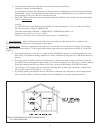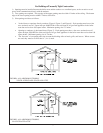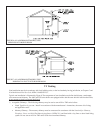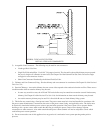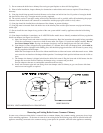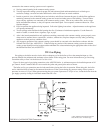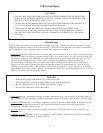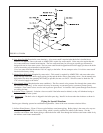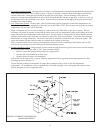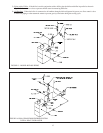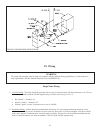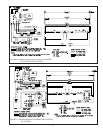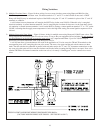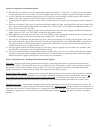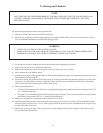
16
2) Large Water Volume Systems - The piping shown in Figure 13 will minimize the amount of time that the boiler operates with
return temperatures below 120°F on these systems. A bypass is installed as shown to divert some supply water directly
into the return water. The bypass pipe should be the same size as the supply. The two throttling valves shown are
adjusted so that the return temperature rises above 120°F during the first few minutes of operation. A three-way valve can
be substituted for the two throttling valves shown. If the circulator is mounted on the supply, the bypass must be on the
discharge side of the circulator.
3) Low Temperature Systems - Some systems, such as radiant tubing systems, require the system water temperature to be
limited to a value below the temperature of the water leaving the AWI or TWI. These systems also typically have return
temperatures well below the 120°F minimum.
Figure 14 illustrates the use of a heat exchanger to connect the AWI or TWI boiler to this type of system. The heat
exchanger will permit the transfer of heat from the boiler water to the low temperature system while holding the system
supply and boiler return temperatures within their limits. For this system to work properly the heat exchanger must be
properly sized and the correct flow rates are required on either side of the heat exchanger. Consult the heat exchanger
manufacturer for sizing information. The water in the boiler is completely isolated from the water in the system. This
means that separate fill and expansion tanks are required for the heating system loop.
There are several other ways to connect low temperature systems to the non-condensing boilers like the AWI or TWI
such as four way mixing valve and variable speed injection pumping systems.
4) Systems containing oxygen - Many hydronic systems contain enough dissolved oxygen to cause severe corrosion damage
to a cast iron boiler such as the AWI or TWI. Some examples include:
• Radiant systems that employ tubing without an oxygen barrier.
• Systems with routine additions of fresh water.
• Systems which are open to the atmosphere.
If the boiler is to be used in such a system, it must be separated from the oxygenated water being heated with a heat
exchanger as shown in Figure 14.
Consult the heat exchanger manufacturer for proper heat exchanger sizing as well as flow and temperature
requirements. All components on the oxygenated side of the heat exchanger, such as the pump and expansion tank,
must be designed for use in oxygenated water.
FIGURE 12: INDIRECT WATER HEATER
BOILER SIDE PIPING
14



